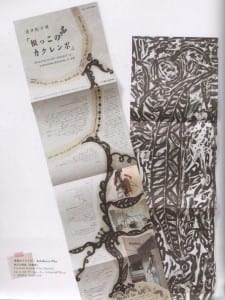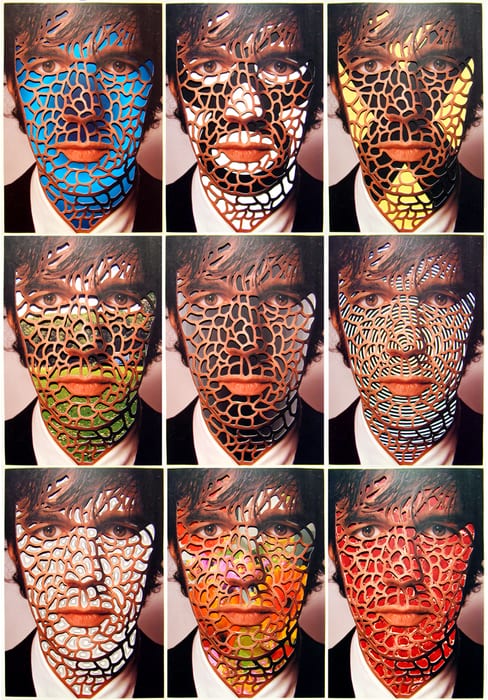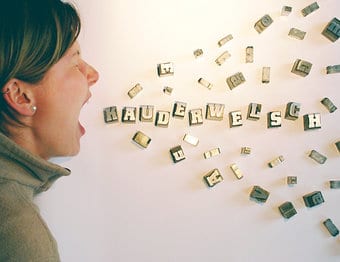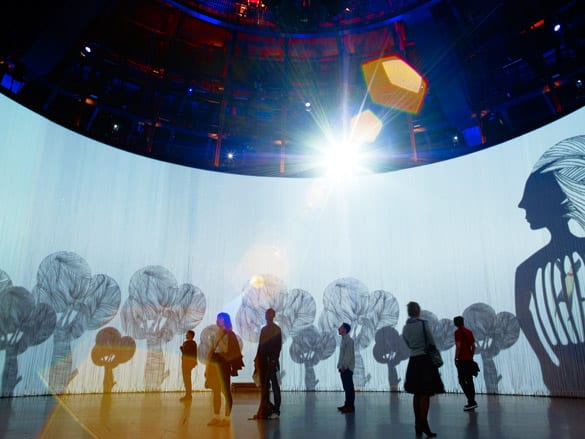Guest lecture from a magician…
This lecture was surprisingly very interesting and helpful to the project. Stuart spoke a lot about magic and how it can link with experience design, whether it’s a big or small ways. For example he prefers to create magic with people, rather than having a ‘main man’ perform them to you. He also shared with us that people like to be led, and not just be told to do something, but when you are encouraged to follow someone and they involve you, you trust them more and more more likely to participate. Yes he was talking about magic, but it links with experience design. People should be involved in creating their experience and not just be shown or told, but led through it. Also just like with magic, Stuart shared with us that when you add people to a process you should allow space for things to happen that you might not expect.
He shared with us different projects that involved design and magic working together to create an experience. These included things like:
- a light travelling onto someone’s hand and travelling with them across a room.
- a dripping tap, that when a strobe light shone on it at the right time and place it look like it was still, or falling slowly, or even going back up into the tap.
- a box that when you put your hand into it, it can look like a wing, or a hoof, or even a claw.
All these examples show how technology can be used to create all sorts of experiences, whether the audience is needed to participate to create the piece, or are just involved by watching something happen..
Something I hadn’t thought much about, was that ‘How you dress an experience, can change it’. As Stuart rightly said, it’s not just the experience that’s important, but how you arrange and show it to your viewers/audience. For example, Stuart has a suitcase which he takes to different places and for 50p people can see the ‘weird’ and unexplainable thing inside it. He purposely has the ‘thing’ hidden from view, but through how he has positioned this suitcase, people can see the last person’s experience and the expression it creates on their face. This rises curiosity in people, all because of how Stuart ‘dressed’ the experience. He shared with us that curiosity is a powerful thing and like with the ‘weird’ object, the curiosity rose a need in people to see what the thing was that made someone react captivatingly. Curiosity also comes from exclusivity by keeping people out. If they are kept out they are even more intrigued and interested in what it is that’s happening. Anticipation design is similar in the fact that you show people a part of something but not the full picture. Stuart was involved in creating the website for the game ‘GTA2’ and they used this type of design, by only letting one in ten people into the website at a time. Cleverly this method of design just made people more determined to get onto the site by teasing them through the use of curiosity and exclusivity. They wanted to see what they were missing out on. all these approaches are things I hadn’t even thought about and have helped me in my way of thinking as I progress further into this project.
Stuart went on to discuss with us: ‘why do people go to museums?’ Well that seems obvious doesn’t it? I love to go to museums, to learn and feel cultured, others because perhaps it’s something to do or simply because it is free. Surprisingly none of these answers were the top reason why people to go a museum. So Stuart told us that the top reason why people go to a museum is to take someone else/to be with others there and share the experience. Knowing why people go to museums means we can think about how they move around them and how, as Stuart pointed out, do you keep a group together, without people breaking off? From researching into this, Stuart was able to share with us how most people move through a museum or gallery:
- First most people will have some sort of orientation/plan, in which they might get rid of their coats and bags, go to the toilet and maybe get some food. This is an important thing for the museum to get right.
- Then when people begin to go round, they will at first focus on most things and read the information about the things they are observing.
- As time goes on and after about 40minutes they will get a bit bored and browse, rather than looking at everything.
- After a bit more time has passed people tend to only pick the things that attract them to look at, often on their way out of the museum.
All this is very interesting, but what has it got to do with my project? With only 20% of most people’s museum visits being structured and methodical, museum displays need to engage people and give them a reason to view objects and artefacts. This just increases my realisation that for people to even be interested in, let alone experience, my exhibition display, I need to make sure the design and display captures people’s curiosity and grabs their attention. To sum up, how you design and display an exhibition is very important and often is the reason why people will view or pass-by your exhibit.
The last thing Stuart spoke to us about was ‘Attention Design’, and he used the example of Walt Disney’s ‘Disneyland’ to explain this. When working on the film Lassie, Disney realised how a dog is drawn to an object. When years later he built the famous ‘DisneyLand’, he used this technique to draw people in. By just placing a big, beautiful castle in the middle of the theme park, or a giant rocket at ‘Epcot’, people would be drawn in without even being told to do so. Even though this is large scale, the same technique can be used in a museum exhibition to draw people in. Using the help of magicians as ‘imaginers’, Disney land also has many ‘hidden mickies’, that can be found any where in different forms and sizes. Some people will collect photographs of these and it can become a game for people to find them. Museum exhibitions could also include little fun things like this for people to find, get involved with and even collect.
Stuart Noland’s talk was very engaging, just like the many examples of design he shared with us. He also brought many things to mind I hadn’t even thought about using or doing for this project, that have enhanced my thinking.







![DSCN1251[1]](https://melodyrosemilton.blogs.lincoln.ac.uk/files/2013/11/DSCN12511-300x225.jpg)
![DSCN1256[1]](https://melodyrosemilton.blogs.lincoln.ac.uk/files/2013/11/DSCN12561-300x225.jpg)










































